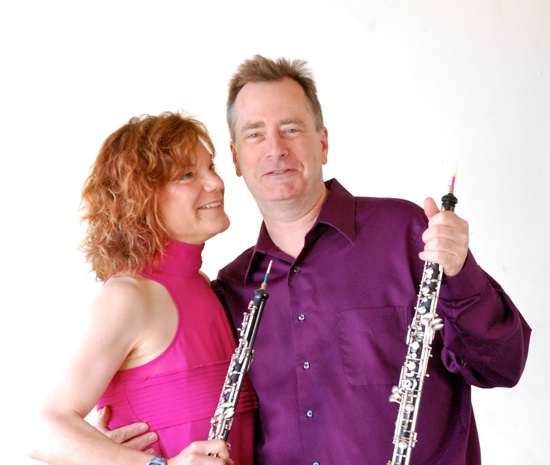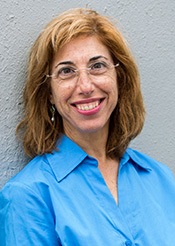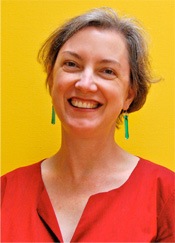The oboe and English horn, instruments that rarely headline, took their spot in the sun last Sunday in Mill Valley’s intimate 142 Throckmorton Theater. The Left Coast Chamber Ensemble often delights in a historical lens on the present by pairing older works with brand new ones, and in this concert, which they named “Oboe Bliss,” they assembled a program around two quintets for wind and strings.
 English composer Arthur Bliss wrote his Quintet Op. 44 for oboe and string quartet in 1927, and one could hear many of the sounds of that era. It was lively and lush, with bits of nineteenth century Impressionism, German Expressionists, Irish reel, and even a tad of Arabic noodling and bagpipes.
English composer Arthur Bliss wrote his Quintet Op. 44 for oboe and string quartet in 1927, and one could hear many of the sounds of that era. It was lively and lush, with bits of nineteenth century Impressionism, German Expressionists, Irish reel, and even a tad of Arabic noodling and bagpipes.
Violinist and Artistic Director Anna Presler introduced it. “Influenced by French Impressionism, this was written by the composer when he was 30. There is also some of the Second Viennese School – the lush stuff, and he even turned tone rows personal – and a very little bit of jazz. Very little. And being English, he always goes back to Elgar.”
Two violins came in, high and hollow and folding from moment to lyric moment, and then cello and viola followed with oboe on their heels. Tom Nugent performed the oboe part with plump notes and a density that easily balanced the strings. Shifting every few bars, one could glimpse a kaleidoscope of the fertile artistic movements between the wars, a little lyrical, a little tortured, at times pentatonic, and then opening into a vision of Shangri La. There were jazz riffs, oboe noodling on a bed of plucked strings, and chords that wheezed in and out. And it all worked rather seamlessly!
Also written for string quartet but with an English horn instead of oboe, Elinor Armer’s Sacred Forest had its World Premiere on this same program.
What was fascinating about that juxtaposition was how much the forms have changed while the fundamental questions about art remain the same. Looking at these very different sound-scapes, one could hear each composer translating meaning through the dialect of their day. But philosophical questions aside, this concert was also an opportunity to have some fun and celebrate lively timbres.
Armer took the stage to speak about Sacred Forest and also of a second short work of hers that we would be hearing, Taking the Waters on

Oling Island. “These two pieces both come out of a collaboration that I have enjoyed for years with the writer Ursula LeGuin. I… wrote Sacred Forest for the Left Coast. Both pieces are about being restored. Taking the Waters is from Uses of Music in Uttermost Parts, written ten years ago with LeGuin. Here, music is water, music is weather… Personally, I find music restorative, and I thank these performers and you, the audience, for participating in this.”
In the intimate theater, the sound of the English horn was reverberant, and one could hear dense overtones in every note, thanks to Nugent’s rich presence. This woodwind, already a concentrated quality in an orchestra, here became positively meaty. A longer cousin to the oboe, Armer described it as having a “…warm, poignant, sometimes feral tone.”
Around the English horn there was a lot of space, with a cello asking soft questions and a violin’s restless answers. Then the five came together in simpler chords, a cloistered and sacred region of modal chant, before wandering off again into fresh and near-random impulses.
Armer’s shorter piece was a viola solo, lovingly performed by Phyllis Kamrin. Here notes rose and descended like the breath, with ends teased out until the notes began to shred. There were fast passages and difficult left-hand pizzicatos and rising motifs that implied a spiritual journey.
 The concert was rounded out with a peppy adaptation of a well-loved standard, Manuel De Falla’s Siete canciones. Originally written for soprano and piano, these “Seven songs” were re-orchestrated for flute, oboe, violin and cello by local composer Kurt Rohde. Flutist Stacey Pelinka evoked Moorish melismas under an Iberian sun as the strings drew out a potent drone. Then Nugent shone in “Asturiana” as a village folk melody, with flute embellishments and a violin’s quick plucked octaves, and very deep cello notes. Along with Presler on violin, Leighton Fong performed the night’s cello parts with a lively intelligence.
The concert was rounded out with a peppy adaptation of a well-loved standard, Manuel De Falla’s Siete canciones. Originally written for soprano and piano, these “Seven songs” were re-orchestrated for flute, oboe, violin and cello by local composer Kurt Rohde. Flutist Stacey Pelinka evoked Moorish melismas under an Iberian sun as the strings drew out a potent drone. Then Nugent shone in “Asturiana” as a village folk melody, with flute embellishments and a violin’s quick plucked octaves, and very deep cello notes. Along with Presler on violin, Leighton Fong performed the night’s cello parts with a lively intelligence.
This is a group well worth seeing, both for the energy of their programming and their unusually high caliber of talent. Leighton Fong plays with numerous groups, including the SF Contemporary Music Players, and I just heard him as the concertmaster of the California Symphony. Last month I heard Anna Presler performing with the New Century Chamber Orchestra, and I have heard Stacey Pelinka perform with many groups – the Berkeley and Santa Rosa Symphonies and Eco Ensemble, and others.
Their next program features Mendelssohn’s D Minor Piano Trio and three present-day trios that have a lot in common with that masterwork, on Sunday Mar. 20 at 7 p.m. in Mill Valley and repeated on Tuesday Mar. 22 at 8 p.m. at the SF Conservatory. Details on their website, leftcoastensemble.org.
—Adam Broner
Photo top: Tom Nugent with wife and fellow oboist Andrea Plesnarski, both founding members of LCCE (and she did not perform at this concert). Below, photos of Phyllis Kamrin and Stacey Pelinka, photos courtesy of LCCE press site.
